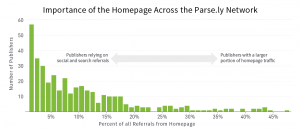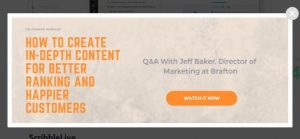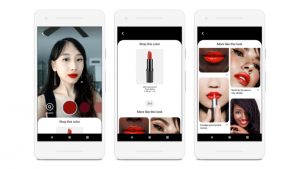When I start an engagement with a new client, the first thing I do is an audit. As the working account manager, I need to get a good sense of how the account’s been set up and how it’s performed to date, to assess where the past success and difficulties have been and to plan for the immediate future.
As anyone who’s completed multiple audits will tell you, I often notice the same mistakes happening time and again. One of the more common, and avoidable, mistakes is stuffing multiple keywords into a single ad group.
At 3Q Digital, we’re firm believers in implementing single keyword ad groups. Also known as SKAGs, this structure offers so many benefits to advertisers that I’m shocked it’s not used more. I understand why, though, since AdWords still suggests that advertisers group keywords by themes. Conceptually, it makes total sense to do that.
Ultimately, advertisers suffer from a serious lack of control when piling keywords together. Here are five reasons why I use SKAGs (and you should, too).
1. Control Over Bidding
Possibly the most important reason to use SKAGs is the benefit to bidding. Placing bids at the ad group level for a set of 10-20 keywords is simply inefficient, because you’re bidding the same amount for the worst performing keyword in that set as you are for the best performing keyword in the set. This makes bid optimization more difficult than it needs to be.
2. Control Over Ad Messaging
Ad messaging should be as relevant as possible to generate a high click-through rate. But, imagine you have six broadly related keywords housed within a single ad group. Just for fun, let’s also image these keywords are broad match type. Because they’re within the same ad group, they share a common ad.
How can we have a highly relevant ad shared by six broadly related keywords that can pull in a wide variety of possibly unrelated search queries?

Imagine the ad group in question is “men’s shirts” and the keywords include “t-shirts,” “button down shirts,” and “red shirts.” Sure, you can use a general ad that speaks to the types of shirts available, but it makes more sense to have an ads speaking to each type of shirt for the best CTR instead of a generic ad. For this reason, breaking out the ad group into SKAGs is your best bet.
3. Control Over Landing Page Experience
To build off my last point, why would you send a user searching for athletic compression shirts to a landing page featuring not only compression shirts, but also sweaters and tank tops? To me, that sounds like a landing page with a guaranteed high bounce rate, because you’re putting all the work on the user to then filter for the type of shirt he’s looking for.
Expecting each user to take the time to look for what they want is wishful thinking. Even using keyword level URLs in this example isn’t a perfect fix, because then there’s still a disconnect between the messaging and the landing page.
4. Ad Delivery
Continue to imagine you run an ecommerce website selling men’s clothing. After some deep analysis, you see that past website traffic converts well on search terms related to button-down shirts, but not t-shirts or athletic shirts. Being the smart advertiser you are, you want to increase bids for past website traffic looking for button-down shirts to get better position for your ads and ultimately convert more.
The problem – remarketing audiences are applied at the ad group level. Unfortunately for you, applying a positive modifier on your selected audience will result in the bids for all keywords within that ad group being increased, not just the button-down shirt keyword.
If this campaign utilized SKAGs, remarketing audiences with positive modifiers could be applied to specific keywords via the single keyword ad group structure, therefore selectively raising bids instead of pushing everything.
5. Organization
Finally, single keyword ad groups are great from an organizational structure. If you’re like me, you like to have a very clean, structured account. I know that each campaign is made up of any number of ad groups that have one keyword and one ad (two if we’re running an A/B test). I often find that when ad groups have large numbers of keywords inside an ad group, one ad group may have a single keyword while others have a lot more (I’ve seen as many as 100+).

While performing audits, I’ve also found the keywords duplicated across multiple ad groups due to the lack of organization involved with this ad group structure. Ultimately, this makes an online marketer’s job more difficult, as the lack of clear structure impedes optimization.
Digital & Social Articles on Business 2 Community(40)








